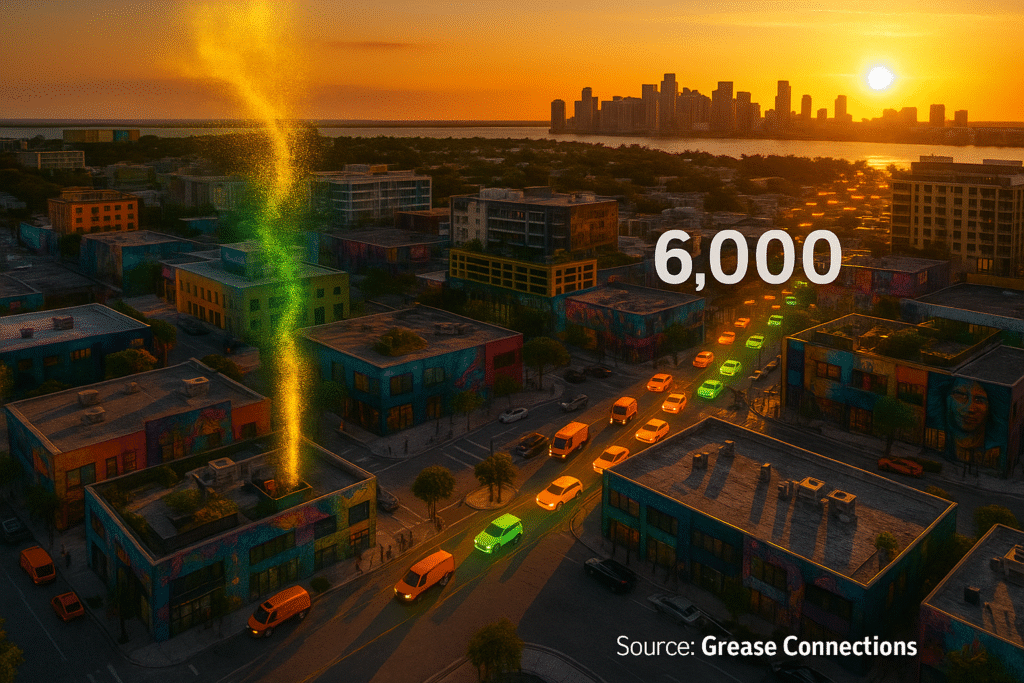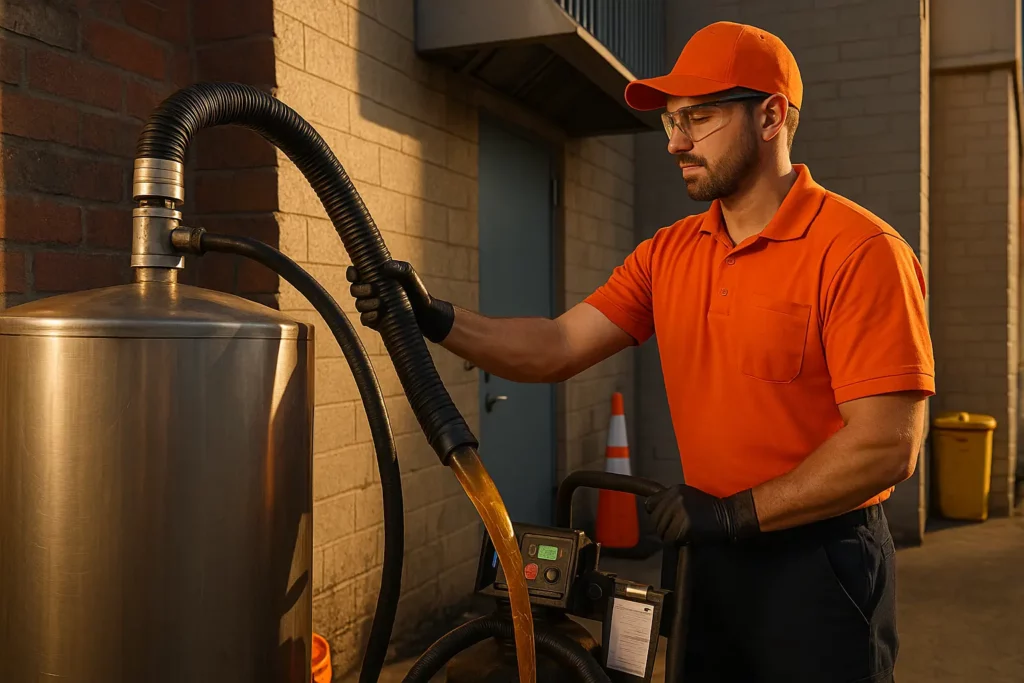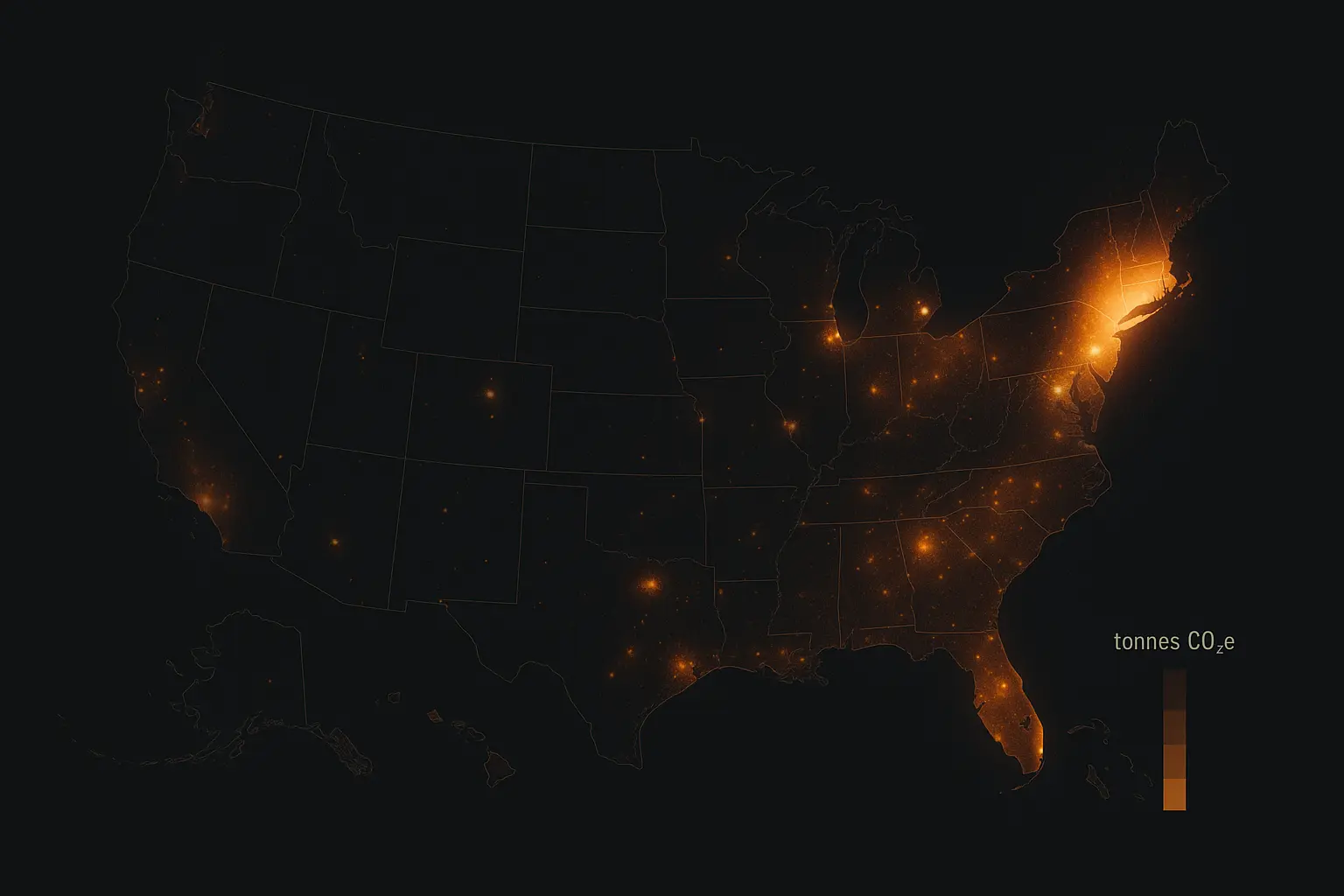Table of Contents
Why This Leaderboard Matters
When restaurants recycle their cooking oil, it’s refined into biodiesel that emits 74% less lifecycle CO₂e than diesel. According to Argonne National Laboratory, every gallon recycled prevents roughly 7.6 kg CO₂e from reaching the air. Scaled across thousands of eateries, the climate upside rivals that of urban transit projects yet it’s hiding in plain sight at the back door grease bin.
How We Crunched the Numbers
- Restaurant counts come from the latest Google Maps scraped or industry tallies for each city.
- A typical fast casual kitchen produces 12,775 lb of used oil a year (≈1,660 gal at 7.68 lb/gal).
- Each gallon converted to B100 avoids 7.55 kg CO₂e (74% of 10.21 kg diesel baseline).
- We multiplied per restaurant savings (≈12.5 t CO₂e) by city restaurant totals, then ranked the results. Full formulas live in the downloadable fact sheet.
Carbon Cutting Kitchens: 2025 Top 15 Metro Leaderboard
| Rank | Metro area | Restaurants | Tones CO₂e avoided / yr* |
|---|---|---|---|
| 1 | New York City | 17,619 | ≈220,238 |
| 2 | Chicago | 11,524 | ≈144,050 |
| 3 | Los Angeles | 11,000 | ≈137,500 |
| 4 | Houston | 8,682 | ≈108,525 |
| 5 | Atlanta | 6,074 | ≈75,925 |
| 6 | Las Vegas | 5,915 | ≈73,938 |
| 7 | Miami | 4,545 | ≈56,813 |
| 8 | San Francisco | 4,415 | ≈55,188 |
| 9 | Dallas | 3,974 | ≈49,675 |
| 10 | Seattle | 3,800 | ≈47,500 |
| 11 | Orlando | 3,754 | ≈46,925 |
| 12 | Washington DC | 2,600 | ≈32,500 |
| 13 | Austin | 2,031 | ≈25,388 |
| 14 | Boston | 1,792 | ≈22,400 |
| 15 | Denver | 1,780 | ≈22,250 |
Spotlight: Miami’s 6,000 Car Achievement
With just 4,545 eateries, Miami still diverts ~56,800 t CO₂e yearly equal to taking 12,350 passenger cars off the road, double our headline claim and proof that south Florida kitchens punch above their weight. High fryer usage in Latin Caribbean menus and robust municipal grease collection programs drive the city’s stellar showing.

Regional Patterns & Surprises
Coastal hubs dominate, but land locked Denver squeaks in despite a contracting scene, thanks to Colorado’s pro biodiesel incentives. Meanwhile, Las Vegas’s tourism fed density keeps it ahead of tech heavy San Francisco, where chain restrictions cap quick service growth.
From Fryer to Fuel: The Journey
Oil hits 150 °C, fries your wings, then cools into leak proof bins. Licensed haulers pump it into regional rendering plants; after filtering, trans esterification turns triglycerides into methyl esters biodiesel ready for B20 blends in delivery fleets. Because it’s “drop in,” no engine mods are needed, accelerating adoption. Industry data show 35 lb/day average waste oil yield per restaurant, proving even mom and pop diners matter.

What Restaurateurs Can Do Next
Switching to sealed, plumbed in tanks cuts slip hazards and guarantees premium buy back rates up to $3.60 / gal this quarter. Pair that revenue with carbon reduction bragging rights on menus, and you’ve served customers cleaner fries and a cleaner planet.









